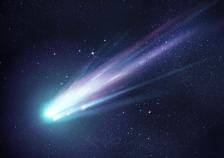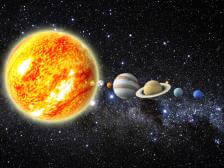What Was the Christmas Star?
Was it a comet? A supernova? A planet? Or some otherwordly phenomenon? Ask Science examines the possibilities.
Lee Falin, PhD
Listen
What Was the Christmas Star?

But what was this bright light in the heavens? Let’s take a look at some of the prevailing theories. ;
Comets

As comets near the sun, they start to melt, releasing a tail of dust and gas that stretches out a pretty long way, sometimes hundreds of miles. Comets can remain visible in the skies for several weeks.
Nova and Supernova
Another common theory is that the event seen by the wise men was a star that went nova or supernova. A nova explosion occurs when two stars are in close proximity to one another. Over time, one star siphons off the stellar material of the other, building up to the point when it finally explodes.
Supernova occur when a massive star experiences gravitational collapse. These events occur near the end of a star’s life and only happen with really, really big stars.
See also: Is it a Star or a Planet?
A nova explosion can cause a flash of light 500,000 times brighter than the light normally produced by the star. A supernova’s flash on the other hand can be more than 10 billion times as bright as normal star light.
Supernova are considerably more rare than novas, with only a couple having been recorded in history. Like comets, they can remain in the skies for several weeks.
Planetary Conjunctions

The more planets involved in a conjunction, the more rare it is.
What Does History Say?
History tells us that all three of these events (novas, conjunctions, and comets), appeared near the time the Bible records for Christ’s birth. Some historians reject the notion that a comet was the sign, as comets were traditionally associated with rather gloomy prophecies, usually involving death and destruction.
Novas are also commonly ruled out due to the fact that novas were relatively common and supernovas are similarly ruled out because none are known to have occurred at the correct time.
The prevailing theory amongst historians is that the Christmas Star which led the wise men to Bethlehem was some type of planetary conjunction.
In the movie The Mystery of the Christmas Star (commonly shown at planetariums this time of year), more details are given on this theory and the evidence supporting it. I highly recommend it to anyone interested in historical astronomy.
Conclusion
So now you know a little more about some of the common theories related to the Christmas Star.
If you have a question that you’d like to see on a future episode, send me an email at everydayeinstein@quickanddirtytips.comcreate new email. If you liked today’s episode, you can become a fan of Ask Science on Facebook or follow me on Twitter, where I’m @QDTeinstein.
Comet and star decoration images courtesy of Shutterstock.

